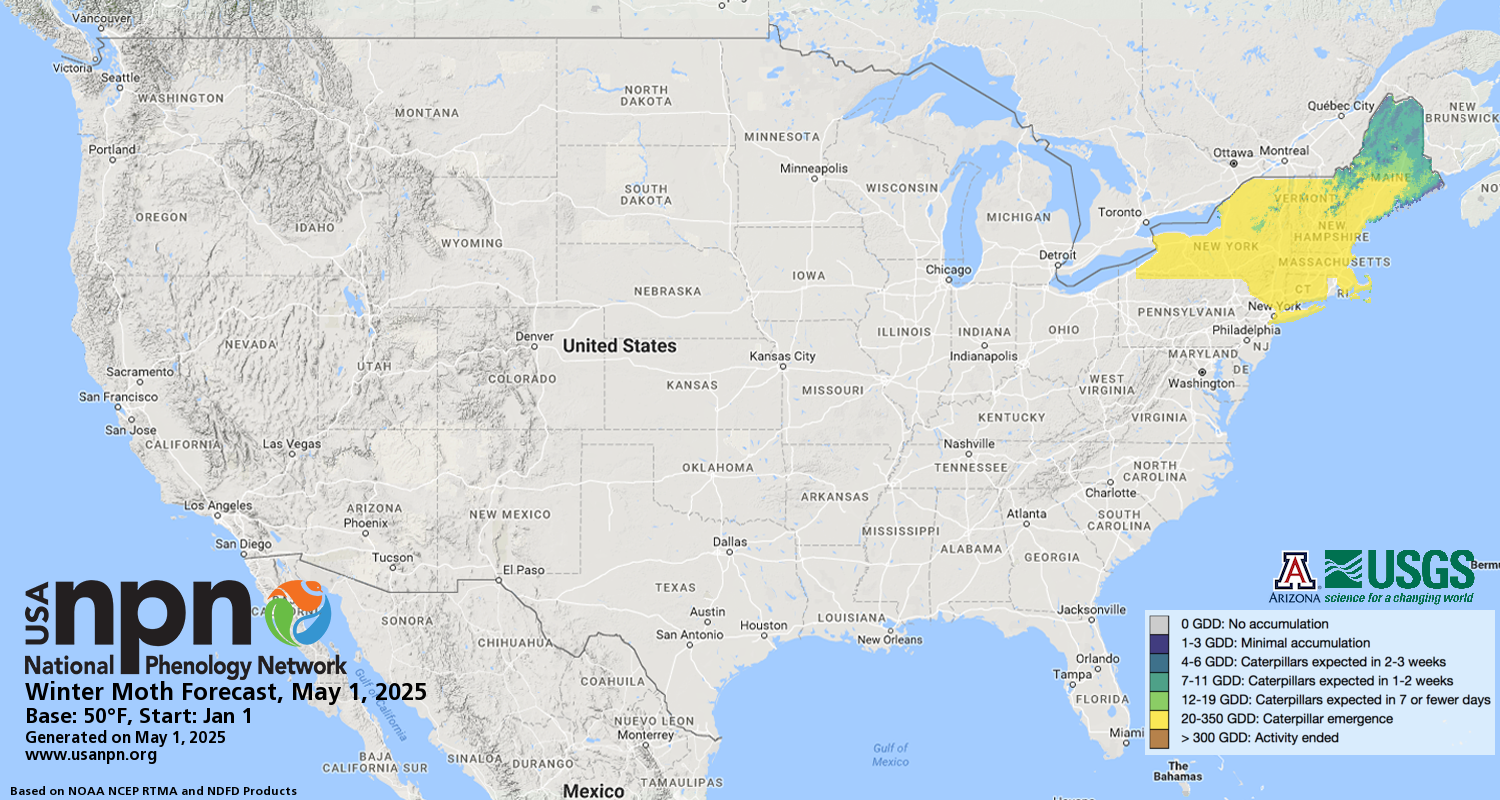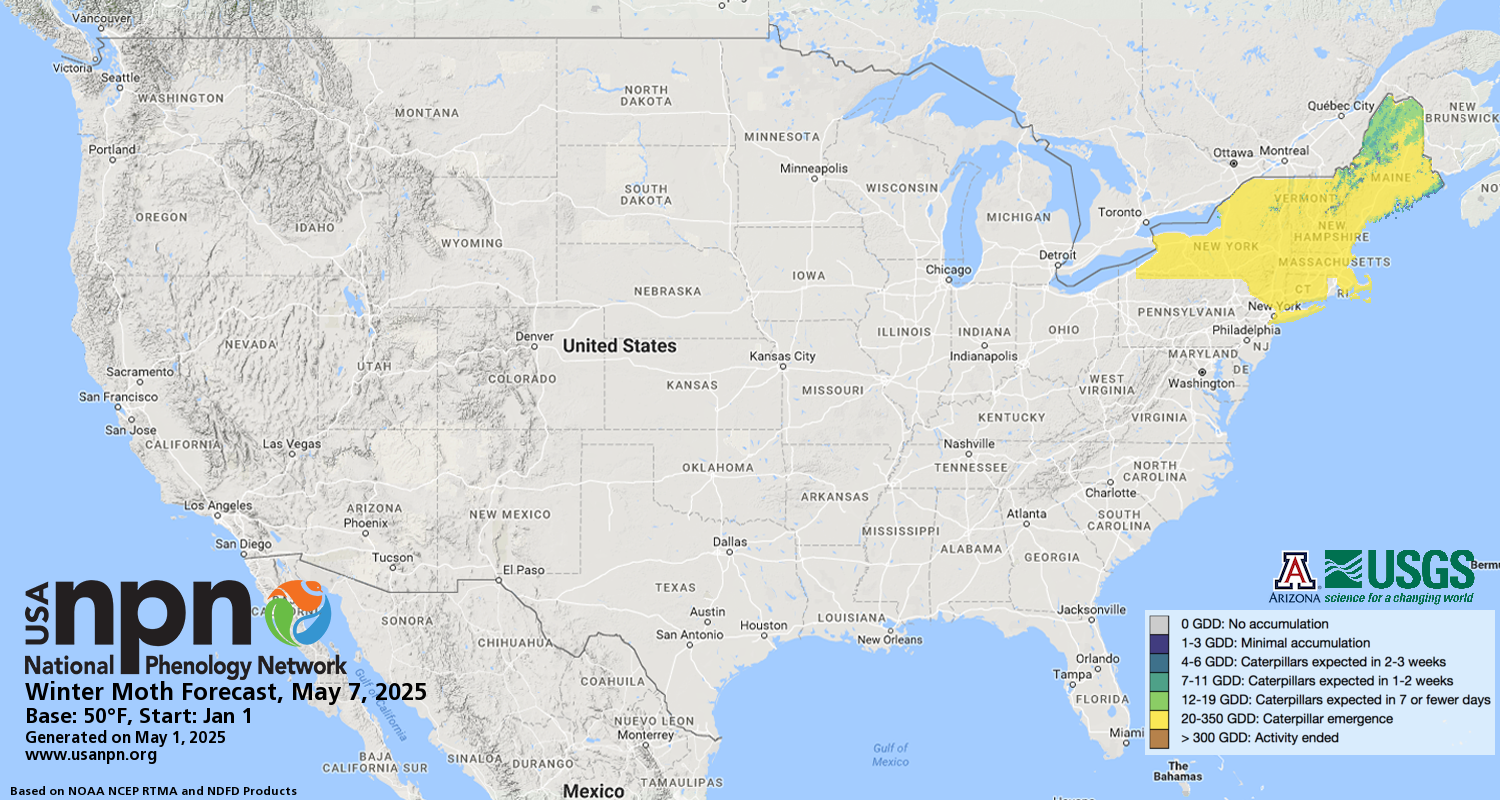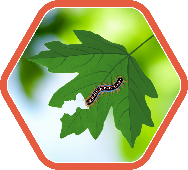Due to technical difficulties, this Pheno Forecast is not currently being updated for 2025. Please check back next year for updated map status.
Winter moth is a non-native insect pest that causes damage to deciduous trees, particularly maples and oaks.
WHAT ARE PHENO FORECASTS?
Pheno Forecast maps predict key life cycle stages in invasive and pest species, to improve management efficacy. For insect pest species, Pheno Forecasts are based on published growing degree day (GDD) thresholds for key points in species life cycles. These key points typically represent life cycle stages when management actions are most effective. These maps are updated daily and available 6 days in the future.
Help us improve these maps! Our Pheno Forecast map products are still in development, and we seek input on their performance in your area. Give your feedback at the bottom of the page.
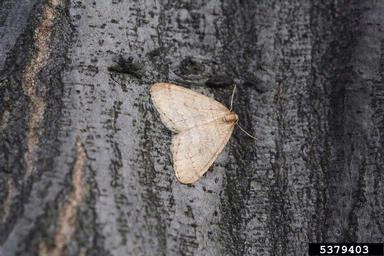
SPECIES BACKGROUND
Winter moth (Operophtera brumata) is a non-native insect that was first identified in the eastern United States in 2003. The caterpillars can defoliate certain species of deciduous trees. The species is present across New England, though damaging populations are only found in eastern Massachusetts, Rhode Island, and Maine. This pest does not appear to be spreading rapidly.
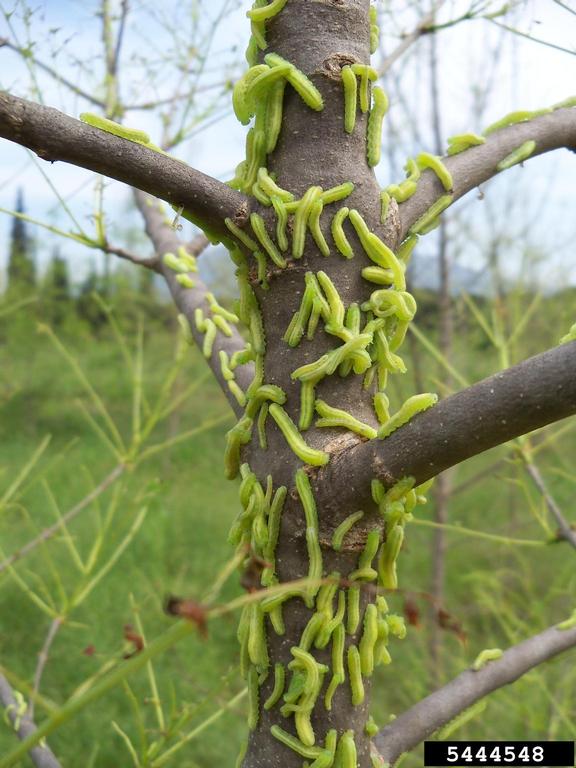
CATERPILLAR FORECAST
We forecast caterpillar emergence based on growing degree days. A biological control (a tachinid fly) appears to be successfully controlling this pest in some years and regions. There are several methods of control depending on local context and host species. Treating the caterpillars, particularly when they first emerge, with an insecticide spray can be an effective control. For specific information on preferred treatment options in your region, we recommend contacting your local extension agent. For additional resources, see visit the UMass Landscape Extension Information Sheet.
EXPLORE THIS FORECAST
Learn more about this forecast using our visualization tool!
|
Phenophase |
GDD threshold |
Base temp |
Start date |
GDD method |
Model origin |
Source |
|---|---|---|---|---|---|---|
|
Caterpillar emergence |
20-350oF |
50oF |
Jan 1 |
Simple average |
MA |
More information on map development and re-use policy.
